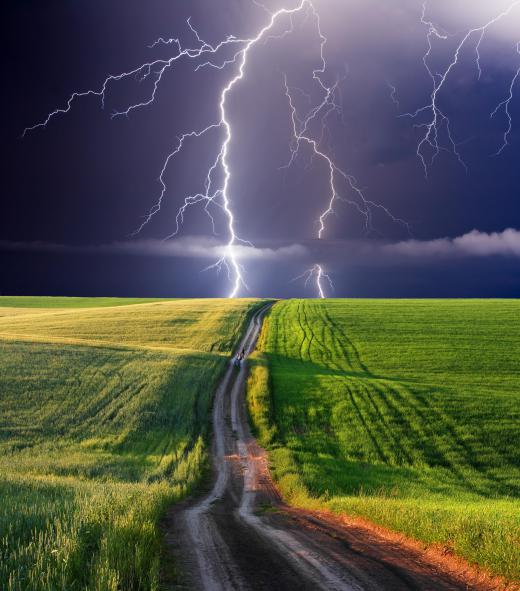Which Instrument Would A Meteorologist Use To Measure Weather Data From The Upper Atmosphere

The dissimilar types of meteorologist tools are the lower, centre, and upper temper instruments. Lower temper instruments include thermometers, barometers, pelting gauges, anemometers, and hygrometers. Rockets and satellites constitute the centre atmosphere instruments, while upper temper instruments are composed of radiosondes and ozonesondes. In using the various meteorologist tools, overall data for weather condition forecasting, averages of climatological data, and data nearly the temperature, water vapor, air current profiles, and pollution may be acquired.

Early humans made observations well-nigh the weather and climate mostly past simply looking at the skies. Simple instruments such as conditions vanes have and so been invented, but they were valuable just for measuring climatological data, not for measuring data for atmospheric condition forecasts; these simple instruments do not provide accurate measurements, which are essential in making atmospheric condition forecasts. With the invention of mod meteorologist tools, however, quantitative measurements tin be fabricated by professional meteorologists. Scientists concur that the accuracy of modern meteorologist tools is superior for measuring climatological, atmospheric, and weather forecasting information.

The temperature-measuring instrument called thermometer is of two types: mechanical and electrical. Liquid-in-glass thermometers are mechanical, whereas resistance thermometers are electrical. Used in measuring the weight of air, scientifically termed equally atmospheric pressure, barometers may be classified as mercury, or those used in research laboratories, and aneroid, or those used in homes and weather stations. Regular checking of an aneroid barometer against a mercury barometer is needed for calibration purposes. Additionally, an aneroid barometer may be made into a recording instrument called barograph past placing a pen to its pointer.

Considered the earliest of the meteorologist tools, the rain gauge is an piece of cake-to-construct instrument that measures the amount of atmospheric precipitation. In the quaternary century BC, the oldest pelting estimate data were recorded in India, where the presence of a network is believed to take existed due to records of precipitation averages in several areas. Meanwhile, the wind speed-measuring instrument called anemometer has "cups" that rotate around a shaft in the eye as the wind moves them. Humidity, or moisture content of the air, tin be measured by using a hygrometer. The two types of hygrometers used by meteorologists are psychrometer and assimilation hygrometer.

A rocket is an internal combustion engine that carries its own fuel and oxidizer, which is why it tin operate within and be used to written report the World's atmosphere. Examples of payloads, or meteorologist tools that rockets carry, include pressure and density sensors. Meanwhile, weather satellites are used by meteorologists to observe clouds and weather systems from to a higher place. The use of satellite information has resulted in an increased accuracy of atmospheric condition forecasts.

Radiosondes are small radio transmitters that were developed to collect atmospheric measurements and to transmit data nerveless to weather stations on Earth. Earlier versions had a clock or windmill that is useful for instant recording of data, whereas modern versions are equipped with barometers, thermometers, and hygrometers. Together with ozone level-measuring instruments called ozonesondes, radiosondes are carried into the atmosphere by an unmanned balloon.
Which Instrument Would A Meteorologist Use To Measure Weather Data From The Upper Atmosphere,
Source: https://www.wise-geek.com/what-are-the-different-types-of-meteorologist-tools.htm
Posted by: motleywillynat81.blogspot.com


0 Response to "Which Instrument Would A Meteorologist Use To Measure Weather Data From The Upper Atmosphere"
Post a Comment